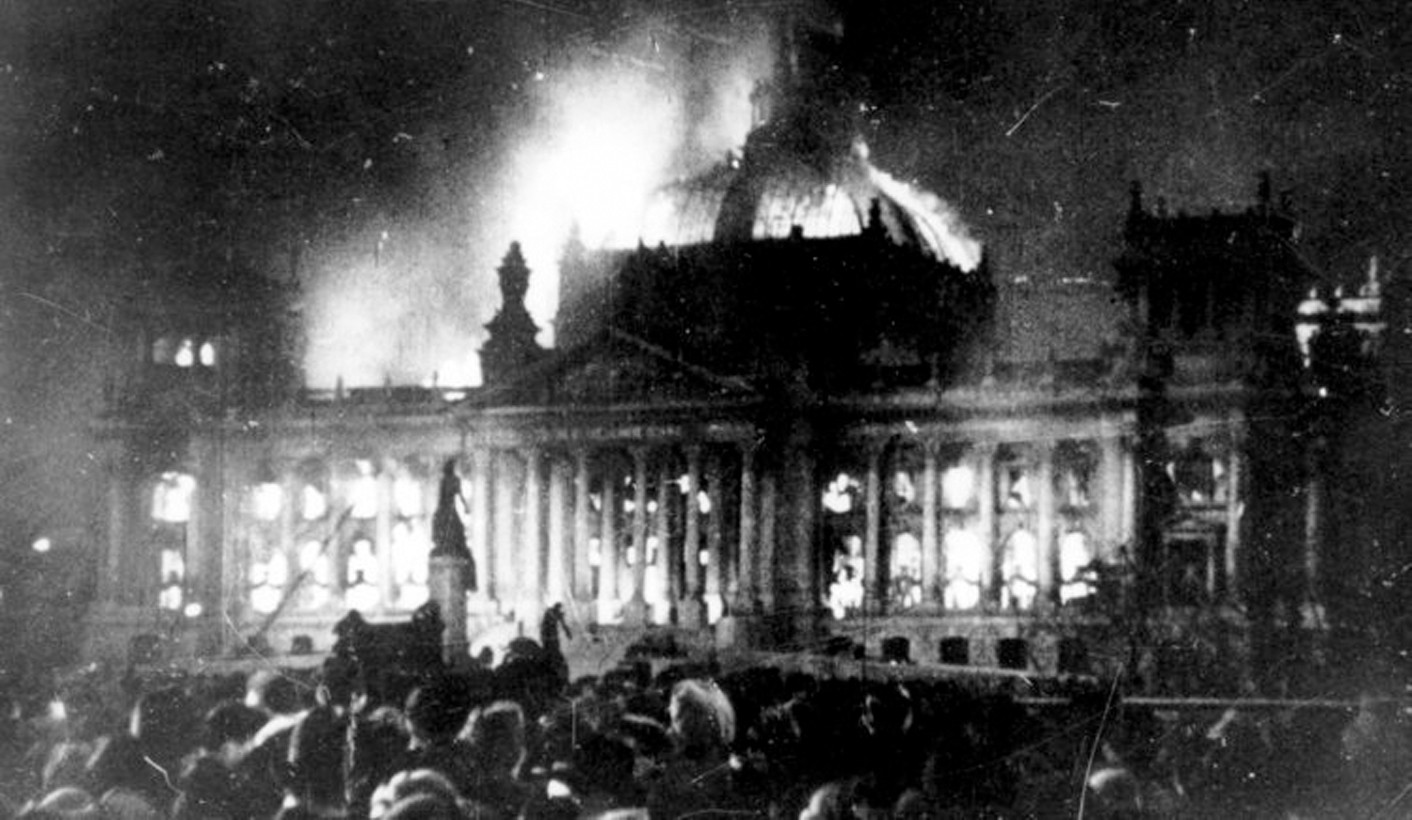How the Reich was Won
In January 1933 Adolph Hitler was installed as Chancellor of Germany and immediately embarked on a plan to end democracy in Germany through procedural machinations, the first of which was to push for a ban of the opposition Communist Party of Germany. The ultimate goal was passage of the Enabling Act, a measure intended to allow government to meet extreme emergencies by elevating the role of Chancellor to one of extraordinary power, enabling him to pass laws by decree.
On 27 February 1933 an arson fire gutted the Reichstag, which housed the German Parliament. The next day, framing the fire as an attempt at a Communist overthrow, Hitler prevailed on President Hindenburg to issue the Reichstag Fire Decree that suspended civil rights in Germany. Combining suppression of the Communists with intimidation and arrests of Social Democrats, Hitler’s National Socialists were able to get the Enabling Act passed on 23 March 1933, setting the stage for the rise of the Nazis and the Third Reich.

We all know what followed.
In the modern US, we have seen the loosely coupled actions and inactions of the Republican Party propel to the presidency a man whose qualifications to hold public office are non-existent, and whose admiration for autocrats is undisguised: Donald Trump. And aided by the election rigging mechanism called gerrymandering, Republicans simultaneously attained a majority in both houses of Congress.
Following the 2016 election Republicans escalated their ongoing campaign of voter suppression through various means. They refuse to confront or contain the leader of their party, a man who spews hate and whose reckless actions can only be characterized as self-serving to the exclusion of all else. Together, they are chipping away at civil liberties with a determination that lays bare their mutual contempt for the United States Constitution.
In the Reichstag was the motto:
Country Before Party